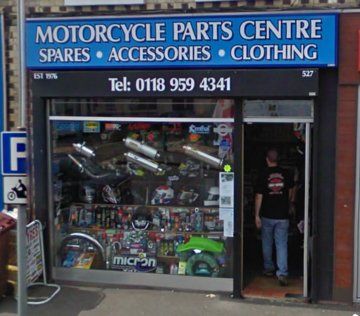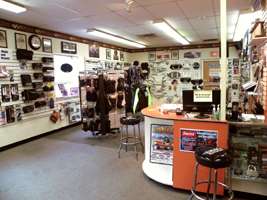Your Best Motorbike Shop for High Quality Parts and Accessories
Your Best Motorbike Shop for High Quality Parts and Accessories
Blog Article
Understanding the Important Parts of a Motorbike: A Comprehensive Overview for Enthusiasts
For bike fanatics aiming to boost their riding experience and ensure their bikes run efficiently, understanding the essential elements of a motorbike is extremely important. Each element, from the engine's elaborate workings to the essential role of the braking devices, not just affects efficiency yet also security and comfort. This overview will stroll via the fundamental components that every biker need to know with, enabling educated choices in both maintenance and prospective upgrades. As we begin this exploration, one must ask: just how does each part interact to produce the seamless ride every fanatic looks for?
Engine Components

The camshaft plays an important duty in controlling the timing of the engine's valves, ensuring the accurate opening and closing required for effective gas and air intake, along with exhaust expulsion. This timing is critical to maintaining ideal engine performance and performance. Furthermore, the carburetor or gas shot system, relying on the bike design, is accountable for blending air with fuel in the proper ratio for burning.
The air conditioning system, either air or liquid-based, works to maintain the engine's temperature level within functional restrictions, avoiding getting too hot and guaranteeing longevity - motocross gear nz. Each element, thoroughly designed and incorporated, adds to the smooth operation of the engine, defining the motorcycle's power outcome and total efficiency
Transmission System
Indispensable to the bike's functionality, the transmission system makes certain effective power transfer from the engine to the wheels. This system consists of numerous critical parts, including the clutch, gearbox, and last drive, each playing an essential duty in converting the engine's power into motion. The clutch, usually run by a hand bar, offers to disengage the engine and engage from the transmission, permitting for smooth equipment changes and regulated velocity.
The gearbox, typically referred to as the transmission correct, contains a collection of equipments that motorcyclists can manually shift with to readjust the bike's rate and torque outcome. These equipments are set up in a series that allows the motorcycle to accelerate smoothly and keep ideal engine performance across various rates. The majority of motorcycles use a consecutive gearbox, calling for the motorcyclist to change gears in a fixed order.
Braking Devices
While understanding the transmission system is key to utilizing a motorbike's power, similarly vital is the capacity to control and stop that power effectively, which is where braking mechanisms enter play. Brakes are important for security and efficiency, supplying the motorcyclist with the necessary control to browse numerous terrains and conditions. Commonly, bikes feature 2 sorts of braking systems: disc brakes and drum brakes.
Disc brakes are a lot more prevalent in contemporary motorbikes because of their superior performance. They include a brake disc, caliper, and pads. When activated, the caliper presses the brake pads versus the spinning disc, converting kinetic power right into heat, therefore slowing the wheel. This system provides much better warmth dissipation, constant efficiency, and boosted stopping power, particularly in wet problems.
Conversely, drum brakes, though less typical, are still discovered in some motorbikes. They work by pushing brake footwear against the internal surface of a drum connected to the wheel. While generally less effective in heat dissipation and quiting power, drum brakes are less complex and much more economical.
Recognizing these braking systems' nuances allows cyclists to maintain their motorcycles properly and appreciate the design that makes certain efficient and secure stopping.
Suspension and Steering
Suspension and guiding systems are important elements that considerably influence a bike's handling and experience convenience. The shock absorber, containing forks at the front and shock absorbers at the back, absorbs road abnormalities, improving security and control. Front forks, upside down or usually telescopic, compress and rebound to alleviate effects, while rear shock absorbers preserve tire call with the road, vital for traction and safety and security.
Guiding, focused around the handlebars, connects the rider to the motorcycle's directional control. The guiding head bearings guarantee smooth operation, allowing accurate ability to move. Proper placement and upkeep of these bearings are critical for foreseeable steering action and minimizing biker fatigue.
The suspension's adjustability is another important facet; preload, damping, and rebound settings enable personalization to suit various riding styles and conditions. This flexibility is crucial for enhancing efficiency, whether browsing city streets or tackling sturdy routes. Technologies like digital suspension systems supply real-time adjustments, enhancing ride high quality throughout varied terrains.

Electric Solutions
After making sure a smooth and regulated adventure with effective suspension and guiding systems, attention transforms to the electric systems, a critical element of modern motorbikes. These systems play a crucial function not just in beginning the engine yet likewise in powering different elements that boost the functionality and security of the motorbike.
At the heart of a motorbike's electric system is the battery, which shops electric power essential for beginning the engine and powering supporting systems - motorcycle shop. The alternator or generator, coupled with the rectifier-regulator, ensures the battery stays charged while the motorbike functions, transforming mechanical power right into electrical energy and keeping voltage degrees
The ignition system, an additional vital part, is accountable for stiring up the air-fuel mixture in the engine's cylinders. Modern motorcycles usually utilize a digital ignition system, offering higher efficiency and reliability compared to standard systems.
Lights systems, including headlights, tail lights, and indications, are also important, ensuring exposure and security for the rider. Added digital components such as sensing units, control units, and displays add to advanced functions like fuel shot administration, anti-lock stopping systems (ABS), and digital dashboards, better boosting the riding experience.
Verdict
A thorough understanding of a bike's crucial elements, consisting of the engine, transmission system, braking systems, suspension, steering, and electrical systems, is crucial for lovers aiming to maximize convenience, performance, and security. Proficiency of these elements enables educated decisions concerning maintenance click here for more and upgrades, ultimately improving the riding click this site experience. By incorporating this knowledge, cyclists can guarantee their motorbikes run at peak effectiveness and dependability, consequently making best use of both enjoyment and durability of their automobiles.
For motorbike fanatics looking to elevate their riding experience and guarantee their bikes run efficiently, comprehending the important components of a motorbike is paramount.Important to the motorbike's capability, the transmission system guarantees reliable power transfer from the engine to the wheels.While recognizing the transmission system is vital to utilizing a motorbike's power, equally essential is the capability to manage and quit that power successfully, which is where braking mechanisms come into play. Typically, motorbikes feature motorcycle products two types of braking systems: disc brakes and drum brakes.
A detailed understanding of a motorbike's important components, consisting of the engine, transmission system, stopping systems, suspension, guiding, and electric systems, is indispensable for enthusiasts intending to maximize efficiency, convenience, and safety and security.
Report this page